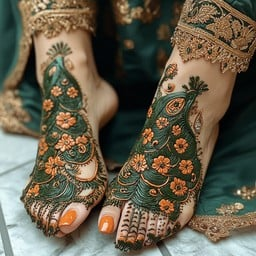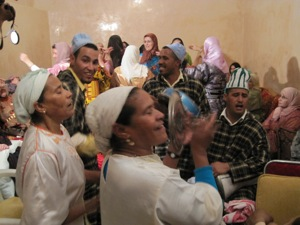- Published on
Unveiling the Splendor of Traditional Moroccan Wedding Rituals and Customs
- Authors

- Name
- Adil ABBADI
Introduction
In Morocco, weddings are a grand affair, steeped in tradition and cultural significance. The country's rich heritage is reflected in the intricate customs, vibrant attire, and joyous festivities that characterize a traditional Moroccan wedding. From the pre-wedding rituals to the grand finale, every aspect of the celebration is infused with meaning and symbolism.
- Cultural Context
- Traditional Significance
- Modern Relevance
- Cultural Preservation
- Conclusion
- Cultural Call-to-Action
Cultural Context
Moroccan weddings are deeply rooted in the country's Islamic heritage, with many customs and traditions influenced by Arab, Berber, and French colonial legacies. The wedding celebration, known as "al-ʿurs" in Arabic, is considered a crucial milestone in a person's life, marking their transition to adulthood and the formation of a new family unit.
Traditional Significance
One of the most significant aspects of Moroccan wedding traditions is the "Henna Night" or "Laylat al-Henna." This pre-wedding ritual, usually held a day or two before the main ceremony, is a symbol of good luck, prosperity, and fertility. The bride's hands and feet are intricately decorated with henna patterns, believed to ward off evil spirits and bring happiness to the couple.

Another essential custom is the "Zaffa," a lively procession of musicians, dancers, and celebrants who escort the bride and groom to the wedding venue. This joyous spectacle is accompanied by traditional music, singing, and dancing, filling the air with excitement and anticipation.
Modern Relevance
While traditional Moroccan wedding customs remain an integral part of the celebration, modern adaptations have also emerged. Many couples now incorporate Western-style wedding elements, such as white wedding dresses and tiered cakes, into their nuptials. Additionally, some couples choose to hold their wedding ceremonies in luxurious riads or modern venues, blending traditional and contemporary styles.
Cultural Preservation
Efforts to preserve and promote Moroccan cultural heritage are underway, with many initiatives focused on documenting and showcasing traditional wedding customs. The Moroccan Ministry of Culture has launched programs to support artisans and craftspeople, ensuring the continuation of traditional skills and techniques, and the preservation of Morocco's rich cultural legacy.

Conclusion
Traditional Moroccan wedding rituals and customs are a testament to the country's vibrant cultural heritage. These elaborate celebrations, filled with symbolism, and meaning, continue to captivate and inspire, offering a unique glimpse into Morocco's fascinating history and traditions.
Cultural Call-to-Action
As we delve into the beauty and significance of Moroccan wedding customs, we are encouraged to appreciate and respect the rich cultural diversity that surrounds us. Let us celebrate the beauty of cultural heritage, and the love that brings people together in the spirit of unity and joy.
